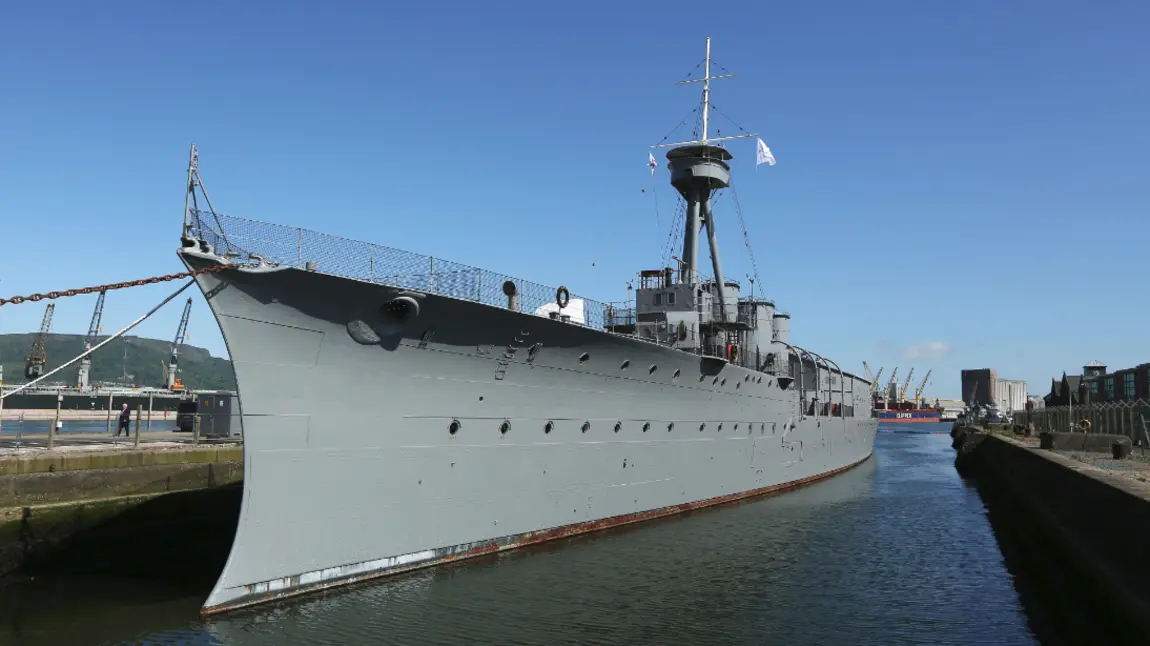HMS Caroline opens to the public

One of the world’s most historically significant warships, HMS Caroline is moored in the Titanic Quarter at Belfast’s Alexandra Dock.
Sir Peter Luff, HLF Chairman, said: "It is immensely gratifying to see HMS Caroline open to the public. This is only possible thanks to a £12.2million grant from National Lottery players - the largest HLF has ever made in Northern Ireland.
"HMS Caroline is a ship of huge significance to Belfast and internationally too. Skillfully restored, she will now add significantly to the wealth of HLF-supported heritage attractions in Titanic Quarter."
The living quarters of the captain, officers and ratings as well as the signal school, engine room, sick bay and galley are all open to the public for the first time. These hugely atmospheric areas of the ship are largely intact from the day the ship was completed in 1914.
This project is only possible thanks to a £12.2million grant from National Lottery players - the largest HLF has ever made in Northern Ireland.
Sir Peter Luff, HLF Chairman
In addition, state-of the art multi-screen video experiences reproducing the sounds and drama of the biggest naval battle ever fought, interactive installations, education suites and spaces for conferences and meetings will ensure the historic ship and its incredible story become an integral part of the Titanic Quarter.
Owners and developers of the ship’s restoration programme, the National Museum of the Royal Navy, say that the museum's accessibility and attention to detail is world class.
A historic vessel
Built in Merseyside in 1914, HMS Caroline saw combat in the Battle of Jutland. Taking place from 31 May-1 June 1916, it was the First World War’s longest, most strategically important sea battle and the only time the full German and British navies engaged directly.
When built she was technologically ground-breaking. It was HMS Caroline's maximum speed of close to 30 knots that enabled the British Navy to respond to the increasing threat of long-range torpedo attack on battleships by locating the enemy fleet and then rapidly carrying news back to the British battleships.
When the war ended HMS Caroline became a static training ship based in Belfast.
During the Second World War, she was once again back in action, acting as a key base for operations to protect the North Atlantic convoys from U-boat attacks.
In 1945 HMS Caroline returned to her role as a static drill ship in Belfast until decommissioned in 2011, making her the longest ship in commission in the British Navy after HMS Victory.

